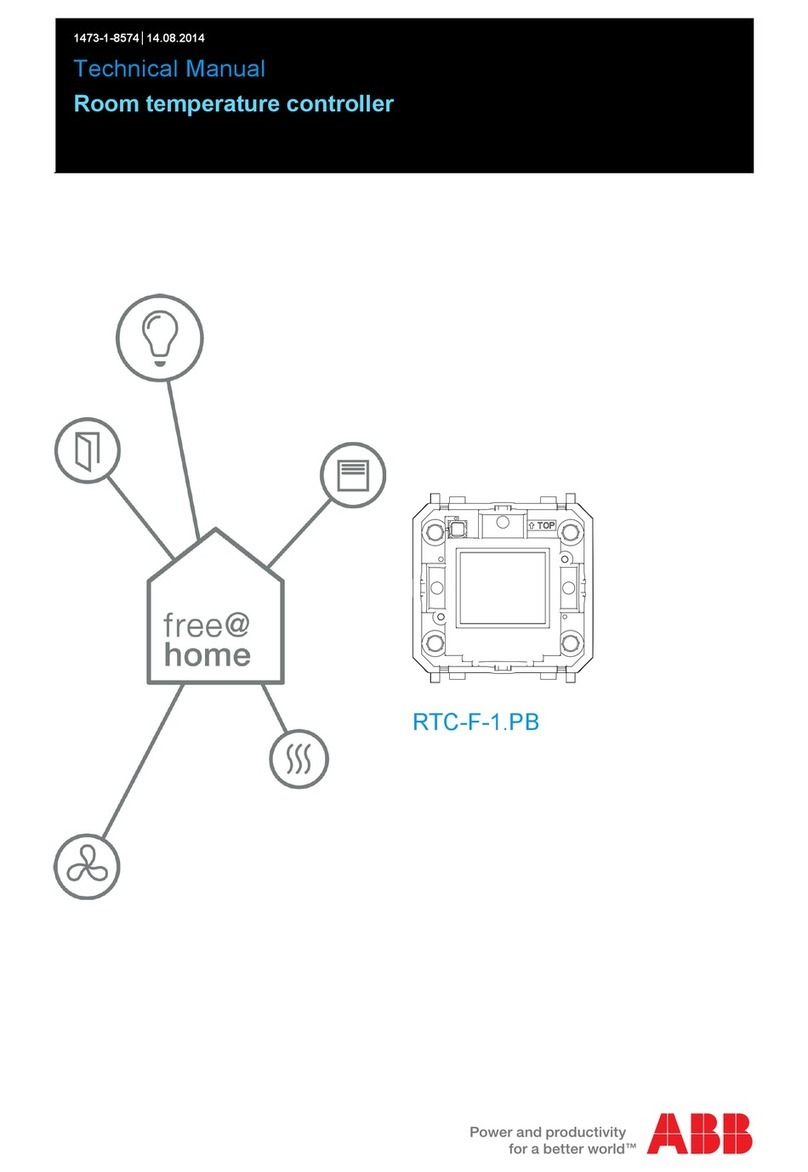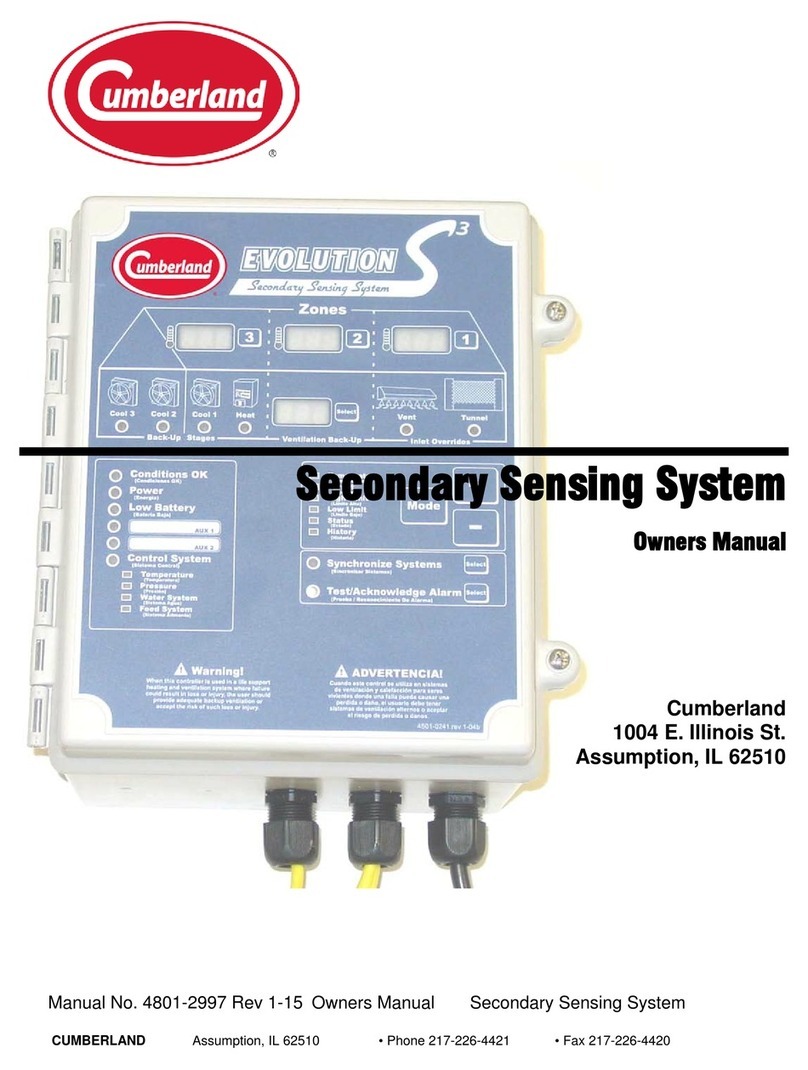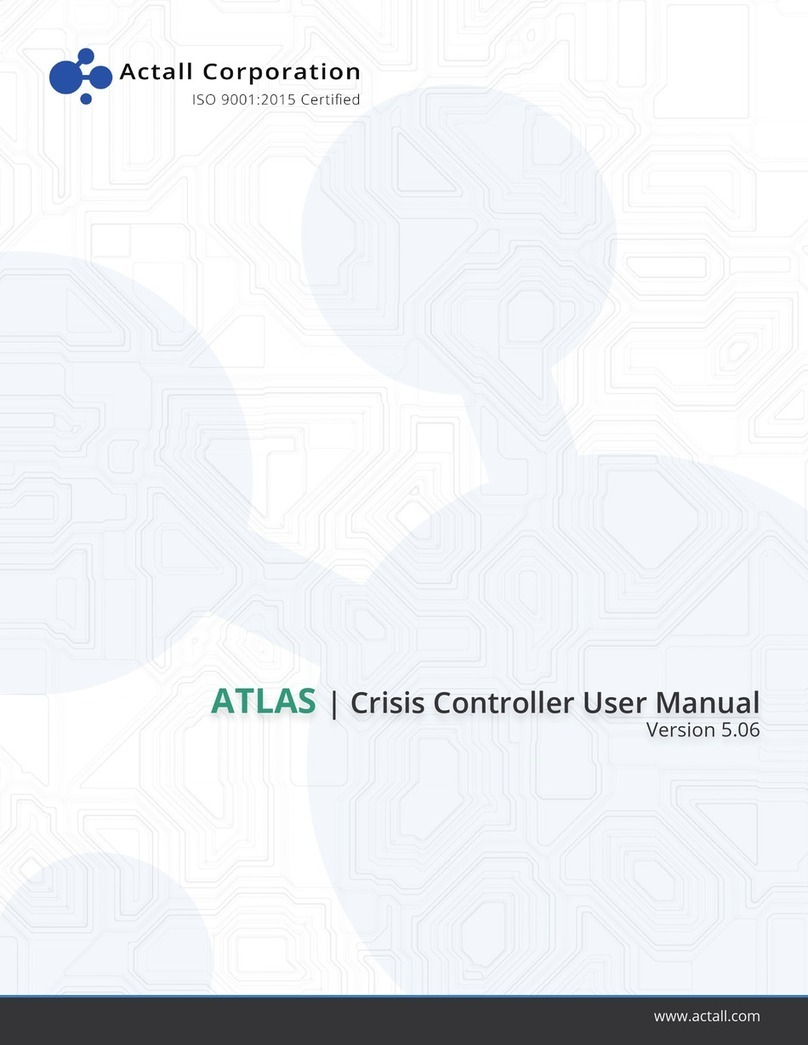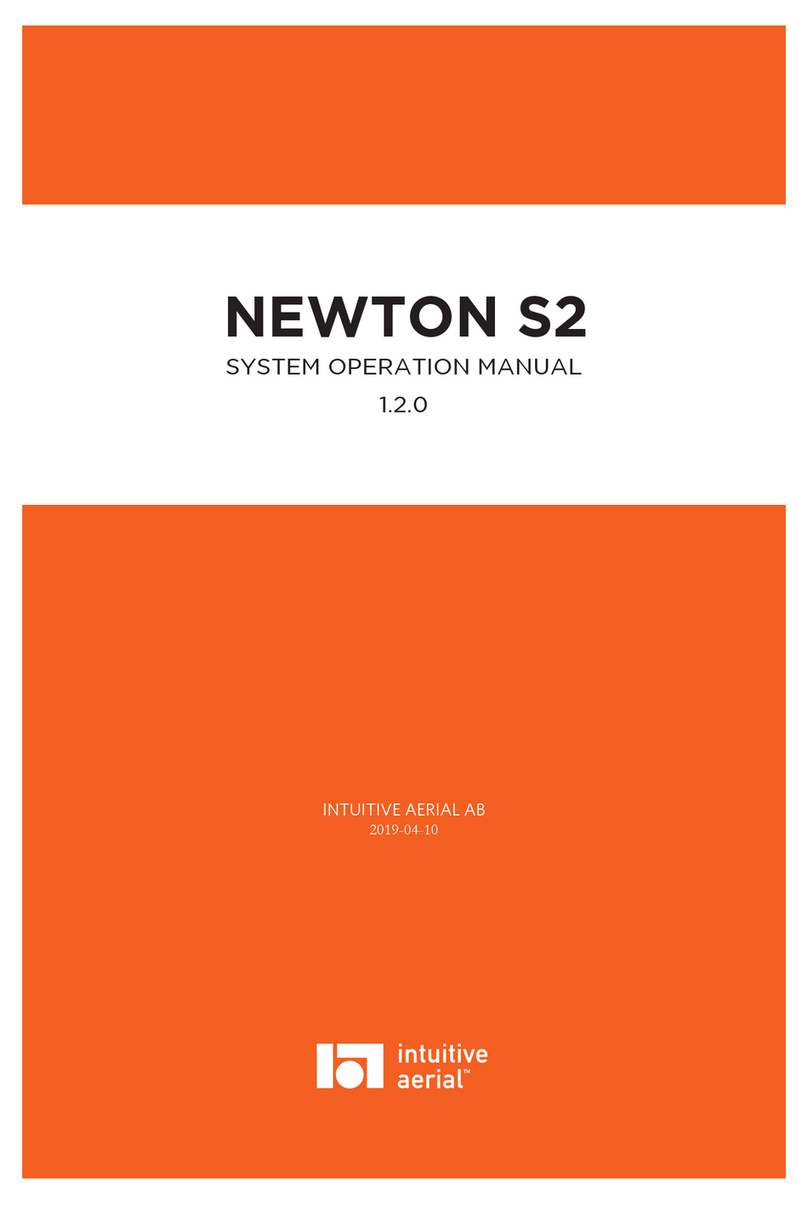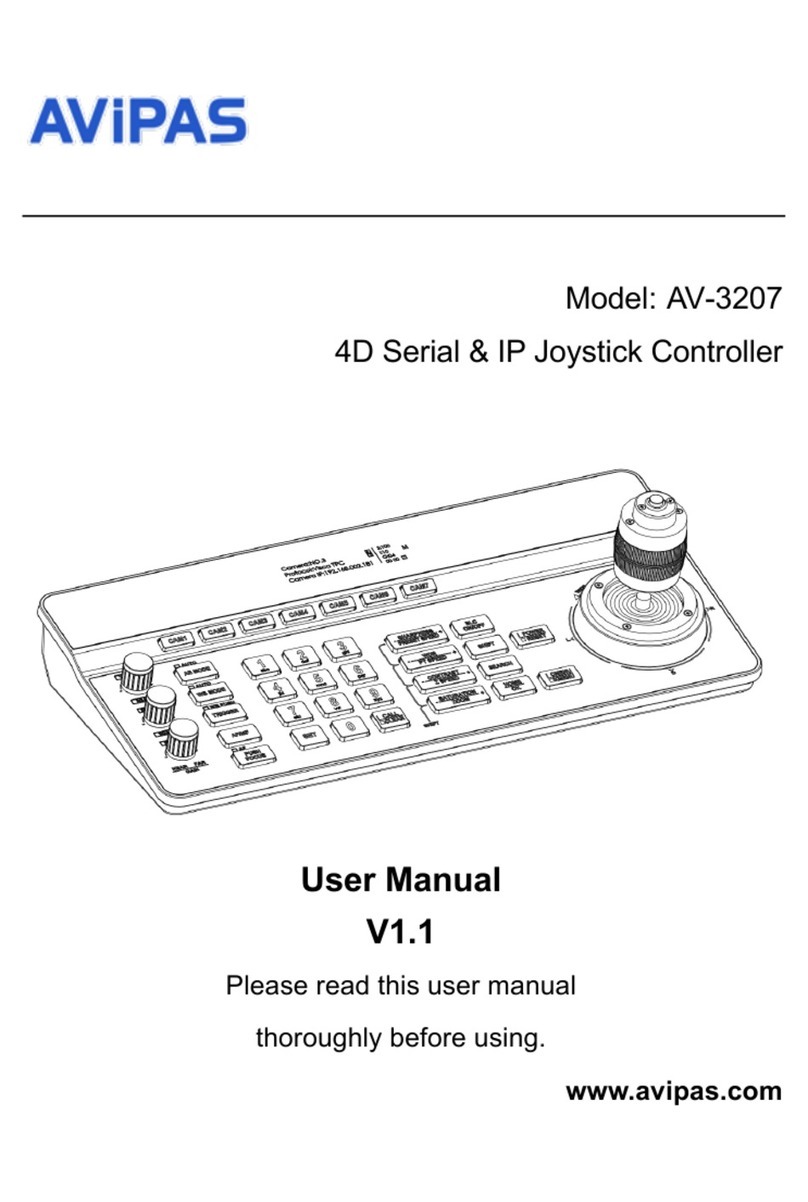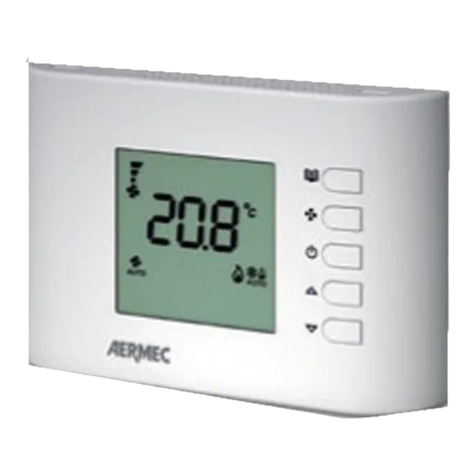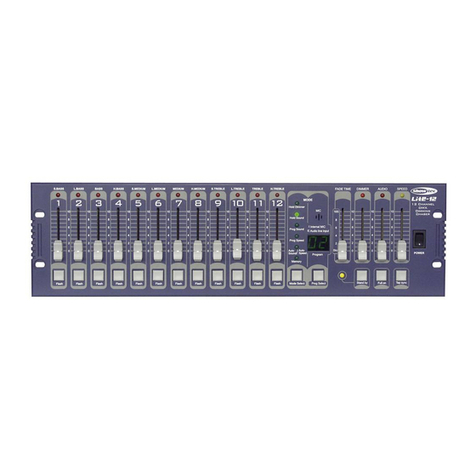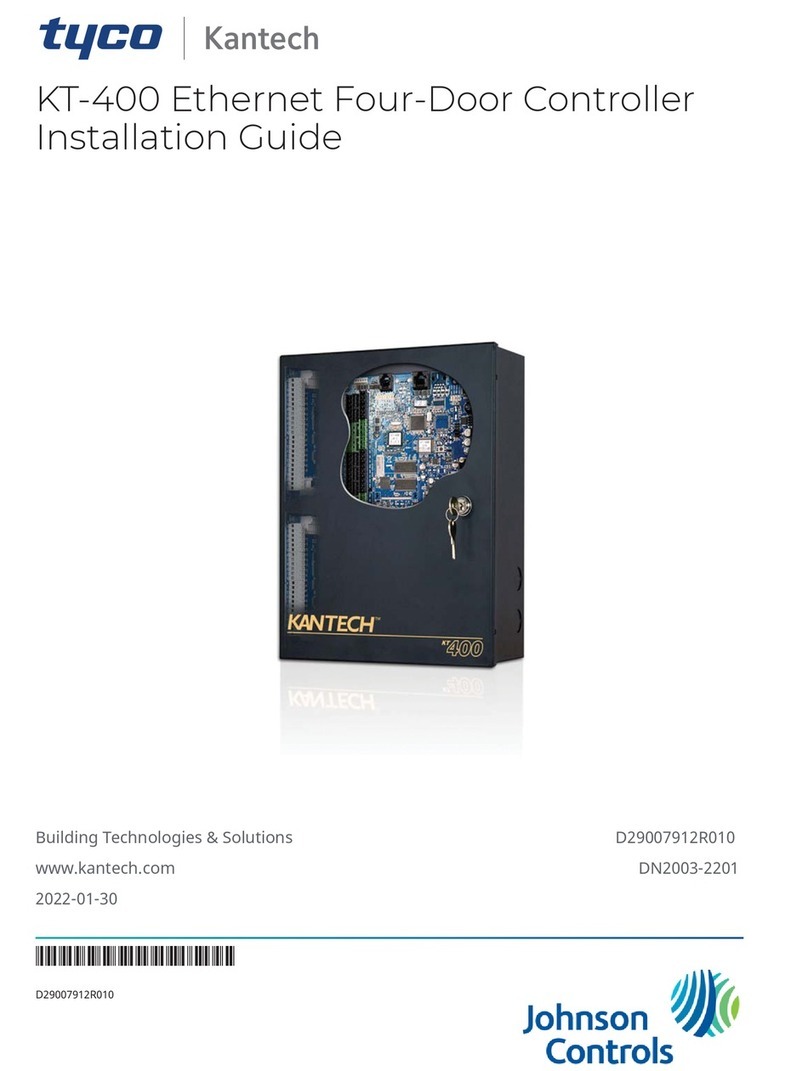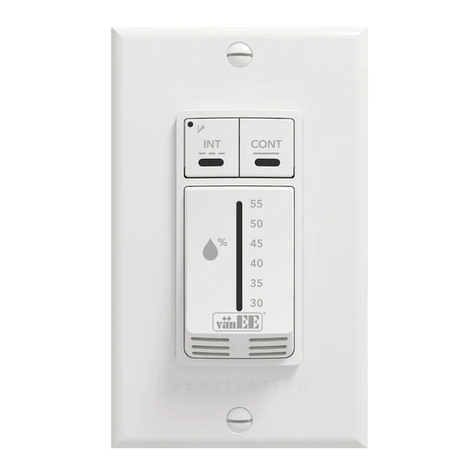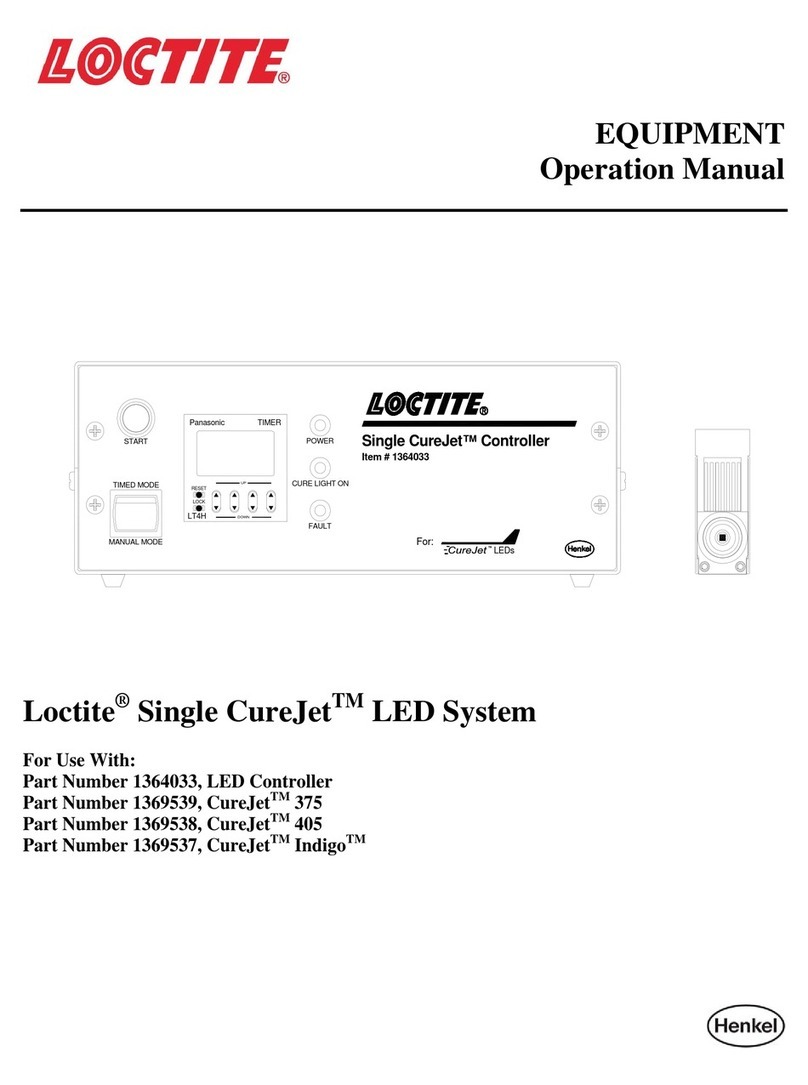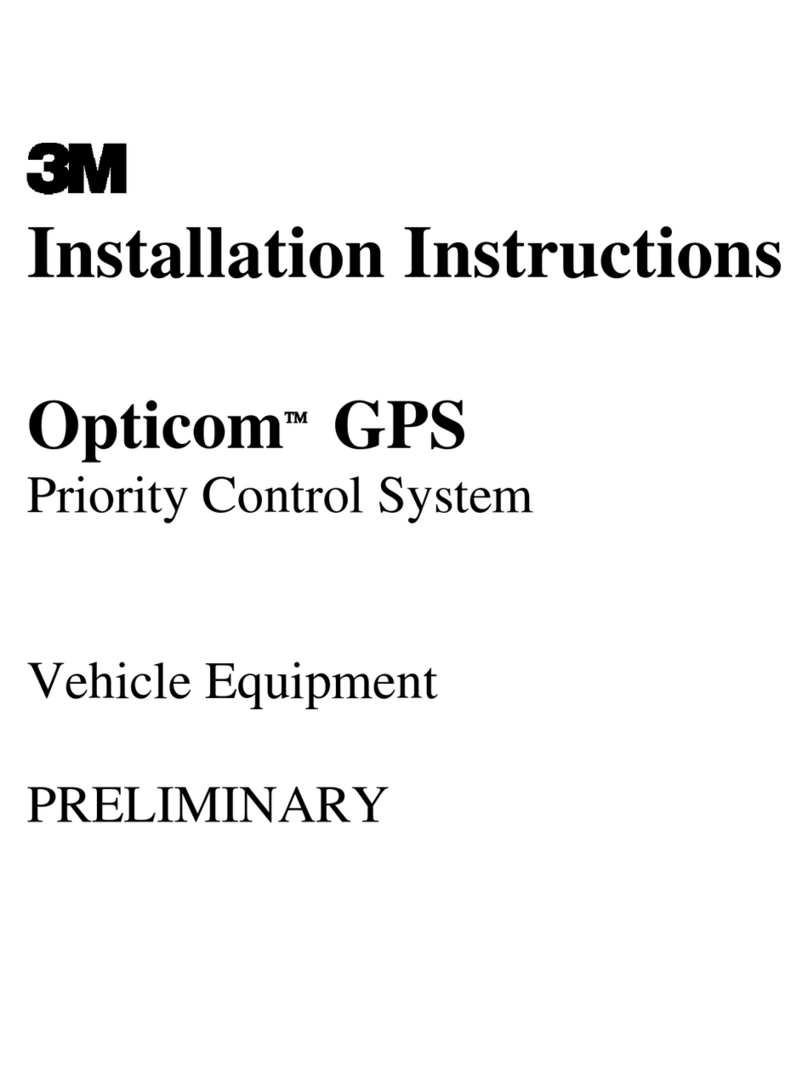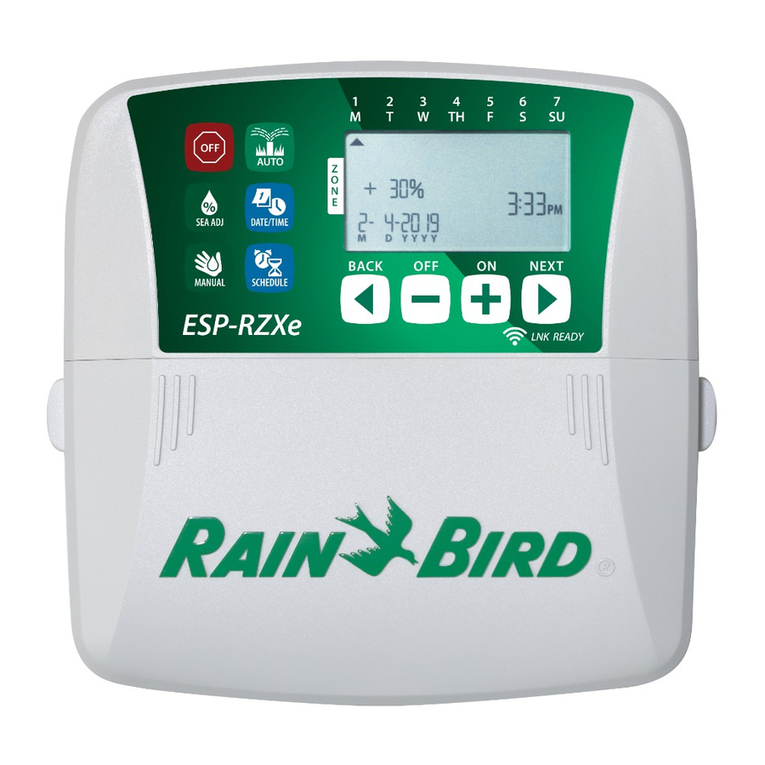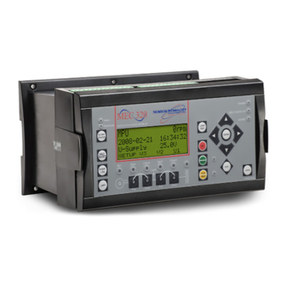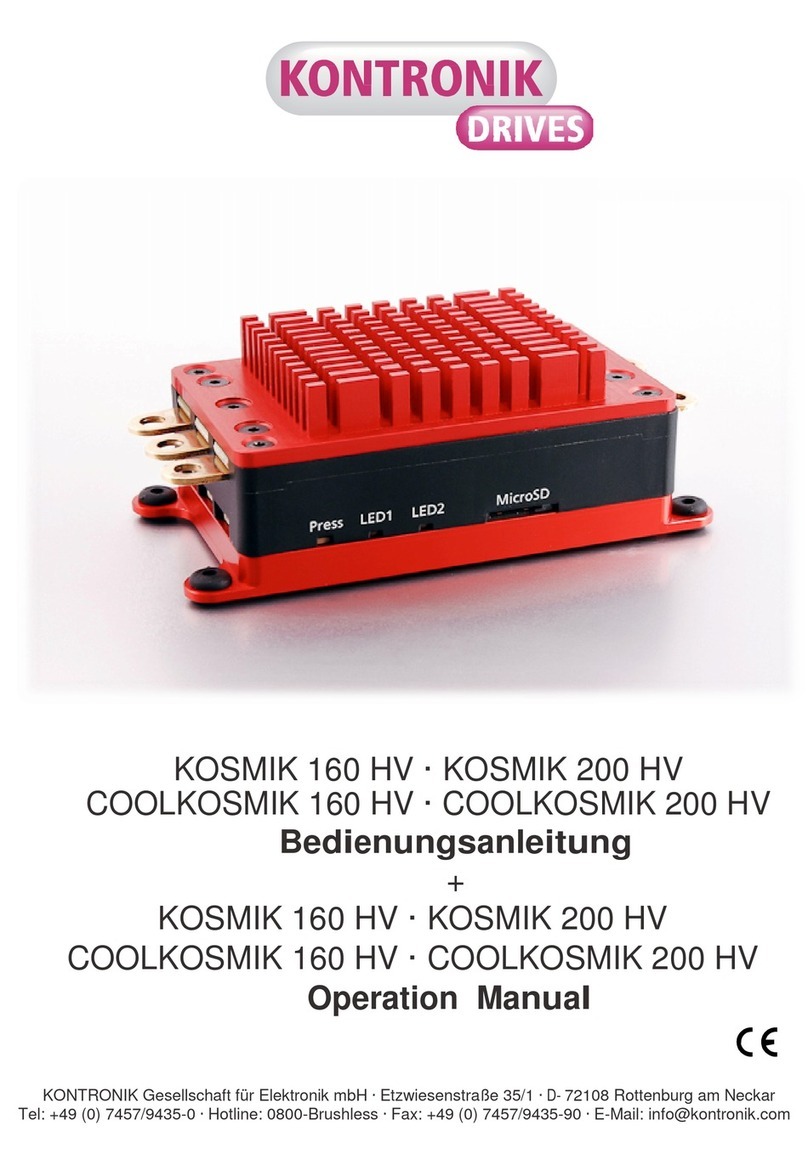Blue Sky Energy SOLAR BOOST 3024i User manual

SOLAR BOOST™ 3024i
30AMP 12/24VDC MAXIMUM POWER POINT TRACKING
PHOTOVOLTAIC CHARGE CONTROLLER
INSTALLATION AND OPERATION
MANUAL
THIS MANUAL INCLUDES IMPORTANT SAFETY INSTRUCTIONS FOR
MODEL SB3024i. SAVE THESE INSTRUCTIONS.
COVERED UNDER ONE OR MORE OF THE FOLLOWING US PATENTS
6,111,391 •6,204,645
© Blue Sky Energy, Inc. 2005 430-0018 C

Blue Sky Energy - Solar Boost 3024i
1
TABLE OF CONTENTS
IMPORTANT SAFETY INSTRUCTIONS ............................................................................................. 2
PRODUCT DESCRIPTION .................................................................................................................. 3
Part Numbers and Options..................................................................................................... 3
OPERATION ........................................................................................................................................ 3
Optional Remote Displays...................................................................................................... 3
Charge Status Indicator ......................................................................................................... 4
Three Stage Charge Control .................................................................................................. 4
Bulk Charge........................................................................................................ 4
Acceptance Charge............................................................................................ 5
Float Charge....................................................................................................... ..5
Two Stage Charge Control..................................................................................................... 5
Equalization............................................................................................................................ 5
Equalize Time Accumulator ............................................................................... 5
Automatic Equalization....................................................................................... 5
Manual Equalization........................................................................................... 6
Optional Temperature Compensation.................................................................................... 6
Maximum Setpoint Voltage Limit............................................................................................ 6
Temperature and Output Power............................................................................................. 6
Maximum Power Point Tracking (MPPT)............................................................................... 6
How MPPT Works .............................................................................................. 7
Multiple Charge Controllers On The IPN Network ................................................................. 7
INSTALLATION ................................................................................................................................... 7
Over Voltage / Reverse Polarity Protection ........................................................................... 7
Electrostatic Handling Precautions ........................................................................................ 7
Solar Boost 3024i Setup ........................................................................................................ 8
Default Factory Settings..................................................................................... 8
Basic Settings..................................................................................................... 9
Advanced Settings ............................................................................................. 9
Restoring Default Settings ................................................................................. 9
Battery And PV Voltage...................................................................................... 9
Charge Mode...................................................................................................... 10
Acceptance Charge Voltage .............................................................................. 10
Float Charge Voltage ......................................................................................... 10
Acceptance Charge Time................................................................................... 10
IPN Network Address......................................................................................... 10
Battery and PV Wiring............................................................................................................ 11
24V Input / 12V Output........................................................................................................... 11
Battery Temperature Sensor.................................................................................................. 11
Auxiliary Output...................................................................................................................... 12
Auxiliary Battery Charge .................................................................................... 12
Load Controller................................................................................................... 12
Installing a Multi-Controller System ....................................................................................... 13
Multi-Controller Wiring And Setup...................................................................... 13
IPN Network ....................................................................................................... 13
Auxiliary Output In Multi-Controller Systems...................................................... 13
Mounting ................................................................................................................................ 14
TROUBLESHOOTING GUIDE............................................................................................................. 15
SPECIFICATIONS ............................................................................................................................... 17
TWO YEAR LIMITED WARRANTY..................................................................................................... 18
TABLES AND FIGURES
Table 1 Charge Status Indicator ..................................................................................... 4
Table 2 Maximum Conductor Length - 3% Voltage Drop................................................ 11
Figure 1 Front Panel and Remote Display Indicators....................................................... 4
Figure 2 Factory Charge Voltage Setpoint -vs.- Battery Temperature............................. 6
Figure 3 Setup and Wiring Diagram ................................................................................. 8
Figure 4 Auxiliary Output Wiring....................................................................................... 12
Figure 5 IPN Network Wiring ............................................................................................ 13
Figure 6 Detailed Dimensional Drawing ........................................................................... 13

Installation and Operation Manual
2
IMPORTANT SAFETY INSTRUCTIONS
This manual contains important instructions for Model SB3024i
SAVE THESE INSTRUCTIONS
1. Refer installation and servicing to qualified service personnel. High voltage is present inside unit. Incorrect installation or use
may result in risk of electric shock or fire. No user serviceable parts in this unit.
2. To reduce the risk of electric shock, fire or personal injury, the following symbols are placed throughout this manual to indicate
dangerous conditions, or important safety or operational instructions.
WARNING CAUTION IMPORTANT
Indicates dangerous conditions or
electric shock potential. Use extreme
caution.
Indicates items critical to safe
installation or operation of the unit.
Follow these instructions closely for
proper operation of the unit
3. PERSONAL PRECAUTIONS
a) Working in the vicinity of lead-acid batteries is dangerous. Batteries produce explosive gasses during normal operation.
b) To reduce risk of battery explosion, follow these instructions and those published by battery manufacturer and manufacturer
of any equipment you intend to use in vicinity of battery.
c) Someone should be within range of your voice or close enough to come to your aid when you work near a lead-acid battery.
d) Have plenty of fresh water and soap nearby in case battery acid contacts skin, clothing or eyes.
e) Wear complete eye protection and clothing protection. Avoid touching eyes while working near battery.
f) If battery acid contacts skin or clothing, wash immediately with soap and water. If acid enters eye, immediately flood eye
with running cold water for at least 10 minutes and get medical attention immediately.
g) NEVER SMOKE or allow a spark or flame in vicinity of battery.
h) Be extra cautious to reduce risk of dropping metal tool onto battery. It might spark or short circuit battery or other electrical
part that may cause explosion.
i) Remove personal metal items such as rings, bracelets and watches when working with a lead-acid battery. A lead-acid
battery can produce a short circuit current high enough to weld a ring or the like to metal, causing a severe burn.
j) Remove all sources of power, photovoltaic and battery before servicing or installing.
4. CHARGER LOCATION & INSTALLATION
a) This unit is designed to charge flooded or sealed type lead-acid chemistry batteries. Follow battery manufacturers charging
recommendations when considering this unit for use with other battery chemistry, i.e., NiCd.
b) This unit employs components that tend to produce arcs or sparks. NEVER install in battery compartment or in the
presence of explosive gases.
c) This unit must be installed and wired in accordance with National Electrical Code, ANSI/NFPA 70.
d) Over current protection for the battery must be provided externally. To reduce the risk of fire, connect to a circuit provided
with 40 amperes maximum branch-circuit over current protection in accordance with National Electrical Code, ANSI/NFPA
70.
e) Over current protection for the auxiliary load control output or auxiliary battery charge output must be provided externally.
To reduce the risk of fire, connect to load or auxiliary battery with 25 amperes maximum over current protection in
accordance with National Electrical Code, ANSI/NFPA 70.
f) Insure that unit is properly configured for the battery being charged.
g) Unit is not water tight. Do not expose to rain or snow.
h) Insure all terminating connections are clean and tight. Battery and PV compression terminals are to be tightened to 45 in-lb
(5 nm). IPN Network and battery temperature sensor compression terminals are to be tightened to 2.1 in-lb (0.24 nm).
Auxiliary output compression terminals are to be tightened to 6 in-lb (0.67 nm).
i) Charging system must be properly installed as described in these instructions prior to operation.
j) Do not connect to a PV array capable of producing greater than 24 amps of short circuit current @ 25°C. Limit input short
circuit current to 12 amps if the 24V input 12V output mode is used.
5. PREPARING TO CHARGE
a) Never charge a frozen battery.
b) Be sure battery is mounted in a well ventilated compartment.
c) Add distilled water in each cell of a lead-acid battery until battery acid reaches level specified by battery manufacturer. This
helps purge excessive gas from the cells. Do not overfill. For batteries other than flooded lead-acid type, or sealed batteries
without cell caps, carefully follow manufacturers charging instructions.

Blue Sky Energy - Solar Boost 3024i
3
PRODUCT DESCRIPTION
Solar Boost™ 3024i a 30 amp 12/24 volt Maximum Power Point Tracking (MPPT) photovoltaic (PV) battery charge controller.
Through the use of patented MPPT technology, Solar Boost 3024i can increase charge current up to 30% or more compared to
conventional controllers. Solar Boost 3024i’s sophisticated three stage charge control system can be configured to optimize charge
parameters to precise battery requirements. The unit is fully protected against voltage transients, over temperature, over current,
reverse battery and reverse PV connections. An automatic current limit feature allows use of the full 30 amp capability without
worrying about overload or nuisance fuse blow from excessive current. An auxiliary output provides either voltage or amp-hour
based 20 amp load control, or can serve as a 2 amp auxiliary battery charger.
Series pass Pulse Width Modulation (PWM) charge voltage control combined with a multistage charge control algorithm leads
to superior charging and enhanced battery performance. The filtered PWM power control system uses highly efficient and reliable
power MOSFET transistors. The MOSFET’s are turned on and off at high frequency to precisely control charge voltage and MPPT.
An environmentally sealed high current high reliability relay is used to disconnect the PV array at night to prevent unwanted current
drain. A relay is used rather than blocking diodes for improved power conversion efficiency, current boost performance, and true
reverse battery polarity protection in an MPPT controller.
Fully automatic temperature compensation of charge voltage is available as an option to further improve charge control and
battery performance. The available battery temperature sensor is built for long term reliability. The sensor element is
environmentally sealed and encapsulated into a copper lug which mounts directly to the battery terminal.
The Solar Boost 3024i also includes an IPN Network interface. The IPN interface allows multiple IPN compatible charge
controllers to communicate with each other and operate as a single machine rather than separate charge controllers. The IPN
interface also provides connection to optional IPN compatible remote displays. The full featured IPN-ProRemote provides
enhanced charge controller setup, monitoring and control. It also provides a complete battery system monitor with amp-hour
counting and a highly accurate remaining battery capacity “fuel gage” type indicator.
PART NUMBERS AND OPTIONS
•SB3024i...............................Solar Boost 3024i controller
•IPNREMOTE.......................IPN-Remote, Low cost LED Bargraph IPN charge control monitor w/25’ cable
•IPNPRO ..............................IPN-ProRemote, Full featured IPN charge control and battery system monitor w/25’ cable
•IPNPRO-S...........................IPN-ProRemote with 500A/50mV current shunt
•CS-500 ................................500A/50mV current shunt
OPERATION
Once installed and configured, charge control and MPPT operations are fully automatic. Charge turns on whenever the PV
array is capable of producing ≈0.25 amps at 2V greater than battery voltage. When PV charge is on the Charge Status LED will
indicate the present charge mode, and indicate when the battery has become highly charged. At night when PV power
production stops, the PV array is disconnected from the battery to prevent unwanted current drain. Note that there is a 5 second
turn-on delay, and a 45 second turn-off delay.
¾The unit operates on battery power, not PV power. A battery must be connected with a minimum voltage
of 9V for the unit to operate.
OPTIONAL REMOTE DISPLAYS
Solar Boost 3024i uses an IPN compatible display which can monitor up to 8 charge controllers on a single IPN network.
There are two available displays, the very low cost IPN-Remote and the full featured IPN-ProRemote. The IPN-Remote is a basic
LED bargraph type voltage, current and charge mode display without setup or control capability.
The full featured IPN-ProRemote incorporates a multi-line backlit LCD display and three function keys to provide enhanced
setup and monitoring of IPN devices on an IPN network. The IPN-ProRemote provides the ability to access additional setup
parameters and adjust setup parameters to wider ranges that those available with the Solar Boost 3024i alone.
The IPN-ProRemote also provides complete battery system monitoring and eliminates the need for a separate battery
monitor. Some of the many displays provided include; battery voltage, net battery current, net battery amp-hours, highly accurate
battery capacity “fuel gage”, PV amp-hours, min/max battery voltage, auxiliary battery voltage, load control status and much more.
With the IPN-ProRemote, the Solar Boost 3024i can be configured to determine the end-of-charge based on net battery current
matched to battery capacity in amp-hours to provide the most highly optimized charge process.

Installation and Operation Manual
4
FRONT PANEL AND REMOTE DISPLAY INDICATORS
FIGURE 1
CHARGE STATUS INDICATOR
An LED charge status indicator is provided on the face of the unit, and on the IPN-Remote and IPN-ProRemote displays. The
LED will be off when the unit is not charging, and will be on solid or blinking when the unit is charging the battery. If the PV array is
capable of delivering greater than approximately 3 to 5 amps per 100 amp-hours of battery capacity, the charge status LED can
provide a rough approximation of battery state of charge as shown in the table below.
CHARGE STATUS INDICATOR
STATUS LED CHARGE MODE APPROXIMATE CHARGE LEVEL
OFF
[0]
CHARGE OFF NOT DISPLAYED
CONTINUOUSLY ON
[1]
BULK <70% FULL
BLINKING
1 SEC ON [1] / 1 SEC OFF [0]
ACCEPTANCE 70% - 95% FULL
BLINKING
0.1 SEC ON [1] / 1 SEC OFF [0]
FLOAT FULLY CHARGED
BLINKING RAPIDLY
0.1 SEC ON [1] / 0.1 SEC OFF [0]
EQUALIZE
TABLE 1
THREE STAGE CHARGE CONTROL
Solar Boost 3024i is typically configured for a three stage charging process, Bulk, Acceptance and Float. The three stage
charge process provides a somewhat higher charge voltage to charge the battery quickly and safely. Once the battery is fully
charged a somewhat lower voltage is applied maintain the battery in a fully charged state without excessive water loss. The
three stage charge process charges the battery as quickly as possible while minimizing battery water loss and maintenance.
Bulk Charge
When charge starts the Solar Boost 3024i attempts to apply the Acceptance charge voltage to the battery. The system will
switch to Bulk charge if the battery is sufficiently discharged and/or insufficient charge current is available to drive the battery up to
the Acceptance voltage setpoint. During the Bulk charge stage the unit delivers as much charge current as possible to rapidly
recharge the battery. Once the charge control system enters Acceptance or Float, the unit will again switch to Bulk charge if

Blue Sky Energy - Solar Boost 3024i
5
battery voltage drops below the present charge voltage setpoint. Fully automatic electronic current limit prevents the possibility of
overload by limiting output current to 30 amps regardless of PV input current or power.
Acceptance Charge
As the battery charges in Bulk, battery voltage slowly rises as the battery recovers charge. When sufficient charge has been
recovered for battery voltage to reach the Acceptance voltage setpoint, the unit changes to a constant voltage mode where the
Acceptance voltage is applied to the battery. The Acceptance voltage is factory set to 14.4/28.8V. In Acceptance the battery is
typically between 70% to 95% charged depending on battery size and available charge current.
The battery remains at the Acceptance voltage until it is fully charged and switches to Float as determined by either;
1. Battery voltage has been continuously at (or above) the Acceptance voltage setpoint for the Charge Time period.
(factory default = 2 hours)
– OR –
2. With the IPN-ProRemote display, net battery charge current drops below the Float Transition Current while the
battery is at (or above) the Acceptance voltage setpoint. (factory default = 1.5A per 100 amp-hours)
Float Charge
Once the battery is fully charged the unit switches to Float where the Float voltage is applied to the battery to maintain it in
a fully charged state without excessive water loss. The Float voltage is factory set to 13.4/26.8V. During Float a healthy fully
charged lead-acid battery will draw approximately 0.1–0.2 amps per 100 amp-hours of battery capacity.
TWO STAGE CHARGE CONTROL
Certain battery types or system configurations may require two stage charge control. Solar Boost 3024i can be configured for
a two stage bulk-acceptance charge to accommodate these batteries or systems. Two stage charge is selected by setting the Float
charge voltage setting to No Float. Refer to the Solar Boost 3024i Setup section to configure two stage charge.
EQUALIZATION
¾WARNING: Not all batteries can be safely equalized. Equalization should only be performed on
vented liquid electrolyte lead-acid batteries. Follow battery manufacturers recommendations pertaining
to equalization.
The Solar Boost 3024i can perform equalization manually or automatically. Since each cell of a battery is not identical,
repeated charge/discharge cycles can lead to an imbalance in the specific gravity of individual cells and electrolyte stratification.
Equalization is essentially a controlled overcharge which brings all battery cells up to the same specific gravity and eliminates
stratification by heavily gassing the battery. While equalization parameters are adjustable with the IPN-ProRemote, factory default
parameters of 15.2/30.4V for 2 hours every 30 days are suitable for most applications. Note that for proper equalization a minimum
net charge current of approximately 3 amps per 100 amp-hours of battery capacity is required. If insufficient current is available
equalization may have to be canceled manually since the equalization time accumulator may not be able to complete count down.
¾CAUTION: Equalization is a controlled over charge of the battery at a relatively high voltage
producing heavy battery gassing. While the Solar Boost 3024i can be configured for manual or
automatic equalization it is strongly recommended that a qualified operator always plan and monitor the
process. The operator should ensure that connected equipment can tolerate the high equalization
voltage which is factory set to 15.2/30.4V. Since the Equalization voltage is temperature compensated,
the voltage can be quite high at cool temperatures if temperature compensation is used.
Equalize Time Accumulator
The equalize time period is not a simple timer but rather a “time at voltage” time accumulator. The equalization timer will not
count down unless the battery is at (or above) the equalization voltage setpoint for the required time period to assure that a proper
equalization cycle has taken place. This is particularly beneficial on systems where the battery or loads are large relative to
available charge current. The equalize time accumulator counts in 3 minute increments. If battery voltage reached the equalization
voltage setpoint during a given 3 minute period, that period is considered good. Unless manually disabled, the unit will stay in
equalize for as long as it takes to accumulate the required time at voltage. This may take hours or even days. If equalize does not
complete by the time the charging day ends, it will pick up where it left off when the next charging day begins.
Automatic Equalization
If DIP switch #5 is turned ON prior to the application of battery power, automatic equalization is enabled. From then on the
unit will perform automatic equalization after the set number of days has elapsed (factory default = 30 days).

Installation and Operation Manual
6
Manual Equalization
If DIP switch #5 is turned OFF, equalization is completely disabled. A manual equalize can be performed by turning DIP
switch #5 ON, after battery power is applied and the unit initializes. After the manually initiated equalization cycle completes,
turn DIP switch #5 OFF. If DIP switch #5 is left ON automatic equalize is enabled. Fully manual equalization can also be
performed from the IPN-ProRemote.
OPTIONAL TEMPERATURE COMPENSATION
The charge voltage required by batteries changes with battery temperature. Temperature compensation of charge voltage
enhances battery performance and life, and decreases maintenance. Automatic temperature compensation can be provided
using the optional battery temperature sensor (BSE p/n 930-0022-20). The default compensation factor of –5.00mV/°C/cell is
appropriate for most lead-acid batteries. The graph of Figure 2 shows charge voltage vs. battery temperature for factory default
Acceptance and Float voltage setpoints. The temperature compensation factor can be changed using the IPN-ProRemote.
FACTORY DEFAULT CHARGE VOLTAGE SETPOINT -VS.- BATTERY TEMPERATURE
FIGURE 2
MAXIMUM SETPOINT VOLTAGE LIMIT
Very cold batteries combined with high charge voltage setpoints can produce voltages high enough to disrupt or damage
other equipment connected to the battery. To minimize possible damage a maximum voltage setpoint limit feature is provided.
The factory defaults of 15.5/31.0V can be changed using the IPN-ProRemote. Regardless of what setpoint values are entered
by the user or result from temperature compensation, the Solar Boost 3024i will never attempt to apply a charge voltage greater
than the maximum voltage setpoint limit value.
TEMPERATURE AND OUTPUT POWER
Over temperature protection is provided to protect the unit from damage due to high output power at high ambient
temperatures. When mounted vertically as described in the installation section, the unit can deliver full output in a temperature of
up to 40°C (104°F). If an over temperature condition exists, the unit will cycle on/off, reducing average power delivery to within safe
limits. During thermal shutdown the Charge Status Indicator will display an “off” condition. Over temperature shutdown occurs when
the heatsink temperature reaches 75°C. Actual heatsink temperature for can be displayed on the IPN-ProRemote.
MAXIMUM POWER POINT TRACKING (MPPT)
MPPT and associated current boost operation is fully automatic and will function whenever sufficient PV voltage and current
are available. The percent increase in output charge current relative to PV current is variable, and will change with operating
conditions. When conditions are such that insufficient PV power is available to produce an increase in output current, the unit will
stop it’s internal DC-DC power conversion and operate as a series pass PWM controller with very low forward voltage drop.
The principal operating conditions which affect current boost performance are PV array temperature and battery voltage. At
constant solar intensity available PV power changes with PV temperature. A PV array’s power vs. temperature characteristic is
such that a cool PV array can produce a higher voltage and more power, than a hot PV array. When PV voltage is sufficiently high
for MPPT to operate, a constant power output is delivered to the battery. Since output power is constant while MPPT is operating, a
decrease in battery voltage produces corresponding increase in charge current. This means that the greatest current increase
occurs with a combination of cool ambient temperature and low battery voltage. The unit delivers the greatest charge current

Blue Sky Energy - Solar Boost 3024i
7
increase when you need it most, in cold weather with a discharged battery. Additionally, anything that can be done to lower PV
array temperature will also lead to increased charge current by increasing PV power production. In cool/comfortable temperatures
and typical battery states of charge, most systems see about 10 – 20% increase. Charge current increase can go to zero in hot
temperatures, whereas charge current increase can easily exceed 30% with a discharged battery and freezing temperatures.
HOW MPPT WORKS
A PV module is a constant current type device. As shown on a typical PV module voltage vs. current curve, current remains
relatively constant over a wide range of voltage. A typical 75 watt module is specified to deliver 4.45 amps @ 17 volts @ 25°C cell
temperature. Conventional PV controllers essentially connect the PV array directly to the battery when battery is discharged. When
a 75 watt module is connected directly to a battery charging at 12 volts, the module still provides approximately the same current.
But, because output voltage is now at 12 volts rather than 17 volts, module power production is artificially limited and the 75W
module only delivers 53 watts. This wastes 22 watts of available power.
Solar Boost 3024i’s patented MPPT technology operates in a very different fashion. Under these conditions Solar Boost 3024i
calculates the maximum power voltage (VMP) at which the PV module delivers maximum power, in this case 17 volts. It then
operates the module 17 volts which extracts maximum available power from the module. Solar Boost 3024i continually recalculates
the maximum power voltage as operating conditions change. Input power from the maximum power tracking controller, in this case
75 watts, feeds a switching type power converter which reduces the 17 volt input to battery voltage at the output. The full 75 watts
which is now being delivered at 12 volts would produce a current of 6.25 amps. A charge current increase of 1.8 amps or 40% is
achieved by converting the 22 watts that would have been wasted into useable charge current. Note that this example assumes
100% efficiency to illustrate the principal of operation. In actual operation, boost will be somewhat less.
MULTIPLE CHARGE CONTROLLERS ON THE IPN NETWORK
A key advantage of the IPN network architecture is the ability for multiple charge controllers operate as a single machine.
Up to 8 IPN compatible charge controllers can reside on a single IPN network charging a common battery. An single optional
display monitors all chargers on the network, and a single battery temperature sensor serves all chargers on the network and
temperature related functions of the IPN-ProRemote. Charge controllers can be added to grow a small system into a large
system and have this large system operate from the users standpoint as a single large charge controller. If any charge controller
in a multi controller system has input power available, the charge control system will start and charge the battery based on
charge control parameters set in the master.
INSTALLATION
¾WARNING: Read, understand and follow the Important Safety Instructions in the beginning of this
manual before proceeding. To reduce the risk of fire, connect only to a circuit provided with 40 amperes
maximum branch-circuit over current protection installed and wired in accordance with National Electrical
Code, ANSI/NFPA 70. To reduce risk of electric shock, remove all sources of power, PV and battery before
installing. Adjustments or connections other than those shown in Figures 3, 4 and 5 void the limited
warranty. Note that Figures 3, 4 and 5 show generalized connections only and are not meant to show all
wiring, circuit protection and safety requirements for a photovoltaic electrical system.
OVER VOLTAGE / REVERSE POLARITY PROTECTION
Solar Boost 3024i is fully protected against reverse polarity and high voltage transients for both the PV and the battery
connections. If the battery is connected reverse polarity, Solar Boost 3024i will not operate. If the PV array is connected reverse
polarity the charge control system will not turn on or provide output current. Should high PV current be available during reverse PV
connection the heatsink will become quite warm but no damage to the unit will result.
¾CAUTION: The unit is protected against reverse battery and reverse PV polarity, but is not protected
against reverse battery to the PV terminals. Additionally, transient voltage protection devices on the battery
and PV terminals are designed to absorb static electric discharges, or other high voltage transients and can
dissipate up to 1.5KW for 1ms. Steady state voltage in excess of 57V on either the battery or PV terminals
will damage the unit. Damage of this type will void the limited warranty.
ELECTROSTATIC HANDLING PRECAUTIONS
All electronic circuits may be damaged by static electricity. To minimize the likelihood of electrostatic damage, discharge
yourself by touching a water faucet or other electrical ground prior to handling the unit and avoid touching components on the
circuit boards. The risk of electrostatic damage is highest when relative humidity is below 40%.

Installation and Operation Manual
8
SETUP AND WIRING DIAGRAM
FIGURE 3
SOLAR BOOST 3024i SETUP
¾Solar Boost 3024i has various setup parameters all of which are preconfigured at the factory. Most
installations require no changes other than configuring the Auxiliary Output if used, and enabling
Equalization if desired. Default settings are typically suitable for most flooded lead-acid batteries.
--------------------------------------------------------------------
¾Setup parameters are divided into two categories, Basic and Advanced. Basic parameters can be
configured with the Solar Boost 3024i alone within limited ranges. Advanced parameters require the IPN-
ProRemote to access. All parameters are retained if power is lost or the IPN-ProRemote is removed.
Factory Default Settings
Basic Settings Advanced Settings
•Charge mode ................................ 3 stage •Equalize voltage ........................................ 15.2/30.4V
•Acceptance voltage ....................... 14.4/28.8V •Equalize time ............................................. 2.0 hours
•Float voltage .................................. 13.4/26.8V •Auto equalize days .................................... 30 days
•Charge time ................................... 2.0 hours •Maximum voltage setpoint limit ................. 15.5/31.0V
•Equalize ......................................... Disabled •Float Transition Current ............................. 1.5A/100 amp-hours
•IPN Network address .................... 0 (zero) •Temperature compensation factor ............ -5.00mV/°C/cell
•Auxiliary Output mode ................... Aux. bat. charger •Load control ON voltage.......................... . 12.6/25.2V
•All DIP switches ............................. Physically set to OFF •Load control OFF voltage........................ . 11.5/23.0V

Blue Sky Energy - Solar Boost 3024i
9
Basic Settings
These setup options are configured with a single 8 position DIP switch located on the main circuit board as shown in
Figure 3. All parameters are saved by switch position or in non-volatile memory and are retained if power is lost.
PARAMETER
OR FUNCTION
FACTORY
DEFAULT
RANGE WITH
SB3024i ALONE
RANGE WITH
IPN-ProRemote
Acceptance Charge
Voltage (VCHG)
14.4V* 14.0 – 14.8V*
(0.2V steps)*
10.0 – 40.0V
Float Charge
Voltage (VFLOT)
13.4V* 13.2 – 13.8V*
(0.2V steps)*
10.0 – 40.0V
Charge Time
(TCHG)
2.0 Hrs 0.0 – 4.0 Hrs
(1.0 Hr steps)
0.0 – 10.0 Hrs
(0.5 Hr steps)
Auxiliary Output Aux. Battery Charge Aux. Battery Charge
-or- Load Controller
Remote Monitoring
Only
Auto Equalize Enable Disabled Enabled / Disabled
-or- Manual
Remote Monitoring
-and- Manual on/off
IPN Address 0 (zero) 0 – 7 –
*Double for 24V battery
Advanced Settings
Advanced settings are programmed into the Solar Boost 3024i and are suitable for most installations. Advanced
parameters can be changed only with the IPN-ProRemote display. All advanced parameters are saved in non-volatile memory
and are retained if power is lost or IPN-ProRemote is permanently removed.
PARAMETER
OR FUNCTION
FACTORY
DEFAULT
RANGE VIA
IPN-ProRemote
Auto Equalize Days 30 days 10 – 400 days (5 day steps)
-or- Manual
Equalize Voltage 15.2V* 10.0 – 40.0V
(0.1V steps)
Equalize Time 2.0 Hrs 0.5 – 10.0 Hrs (0.5Hr steps)
Load Control Low Voltage Disconnect
ON ≥12.6V* OFF ≤11.5V*
ON/OFF 10.0 – 40.0V -or-
Based on net battery amp-hours (5AH steps)
End Of Charge
Determination
Time at charge voltage
(TCHG)
Time at charge voltage (TCHG) -or- net battery
charge current matched to battery amp-hours
Temperature
Compensation Factor
-5.00mV/°C/cell -0.00 – -8.00mV/°C/cell
(0.05mV/°C/cell steps)
Maximum voltage
setpoint limit
15.5V* 10.0 – 40.0V
(0.1V steps)
*Double for 24V battery
Restoring Factory Default Settings
Factory defaults can be easily restored into the Solar Boost 3024i. If the unit is not received in a factory sealed package, it is
possible that settings may not be set to factory defaults. If there is any doubt about present settings, restoring defaults is highly
recommended. Note that restoring defaults as described here restores all defaults in the Solar Boost 3024i but does not restore
defaults in IPN-ProRemote. See the IPN-ProRemote operators manual regarding it’s restore defaults function.
To restore Solar Boost 3024i factory defaults:
1. Remove PV and battery power.
2. Turn ALL 8 DIP switches shown in Figure 3 ON.
3. Restore battery power, wait at least 10 seconds, then remove battery power.
4. Return ALL 8 DIP switches to their default OFF position.
5. The unit is now configured to factory default settings.
Battery and PV Voltage
¾WARNING: Battery and PV voltage are determined automatically. Be certain battery is sufficiently
charged and connected quickly to allow proper battery voltage determination. The battery is determined
to be 12V if voltage when first connected is less than 18V, or 24V if battery voltage is greater. PV voltage
is also determined automatically. PV voltage is determined to be 12V if always less than 28V, or 24V if
ever greater. If PV type is changed from 24V to 12V following installation, battery and PV power must be
momentarily removed and restored so that proper PV voltage can be determined by the controller.

Installation and Operation Manual
10
Charge Mode
Solar Boost 3024i is typically configured for three stage charge. Certain battery types or system configurations may benefit
from two stage constant voltage charge. Two stage charge is selected by setting the Float voltage setting to one step below it’s
minimum voltage setting. “No Float” will then be displayed and the unit will never switch to the Float charge stage.
Acceptance Charge Voltage
The factory Acceptance charge voltage setting of 14.4/28.8V is suitable for most lead-acid batteries. The setting can be
viewed or changed using the charge parameter setup LED’s and operating mode DIP switch shown in Figure 3. To view the
present setting, turn the VCHG switch #8 ON momentarily. If more than one value LED lights, the present setting is in-between these
values. If no value LED’s light, the present setting is outside the range than can be shown. For a 24V battery the actual setpoint is
double that shown on the LED’s.
To change the setting, turn the VCHG switch ON, OFF and then back ON before the LED’s turn OFF. The unit will enter the
setup mode and scan through available settings. Turn the VCHG switch off at the desired setting to store the new value. The LED’s
will blink several times to show the new value was accepted and stored.
Float Charge Voltage
The factory Float charge voltage setting of 13.4/26.8V is suitable for most lead-acid batteries. The setting can be viewed or
changed using the charge parameter setup LED’s and operating mode DIP switch shown in Figure 3. To view the present setting,
turn the VFLOT switch #6 ON momentarily. If more than one value LED lights, the present setting is in-between these values. If no
value LED’s light, the present setting is outside the range than can be shown. For a 24V battery the actual setpoint is double that
shown on the LED’s.
To change the setting, turn the VFLOAT switch ON, OFF and then back ON before the LED’s turn OFF. The unit will enter the
setup mode and scan through available settings. Turn the VFLOT switch off at the desired setting to store the new value. The LED’s
will blink several times to show the new value was accepted and stored.
Acceptance Charge Time
Once the battery recovers sufficient charge to reach the Acceptance charge voltage setpoint, it will remain at this voltage for
the Charge Time period, and then the unit will switch to Float. The default Charge Time setting of 2.0 hours is suitable for most
lead-acid batteries. The setting can be viewed or changed using the charge parameter setup LED’s and operating mode DIP switch
shown in Figure 3. To view the present setting, turn the TCHG switch #7 ON momentarily. If more than one value LED lights, the
present setting is in-between these values. If no value LED’s light, the present setting is outside the range than can be shown.
To change the setting, turn the TCHG switch ON, OFF and then back ON before the LED’s turn OFF. The unit will enter the
setup mode and scan through available settings. Turn the TCHG switch off at the desired setting to store the new value. The LED’s
will blink several times to show the new value was accepted and stored.
IPN Network Address
¾A single controller must have it’s IPN network address set to 0 (zero), which is the factory default. In a
multi-controller system one (and only one) controller must have it’s IPN network address set to 0 (zero) to
serve as the network and charge control master. The other controllers can be any other address (1-7), but
no controller can have the same address.
IPN NETWORK ADDRESS
MASTER SLAVESDIP
SWITCH 0 1234567
# 1 (A2) OFF OFF OFF OFF ON ON ON ON
# 2 (A1) OFF OFF ON ON OFF OFF ON ON
# 3 (A0) OFF ON OFF ON OFF ON OFF ON

Blue Sky Energy - Solar Boost 3024i
11
BATTERY AND PV WIRING
¾WARNING: This unit must be installed and wired in accordance with National Electrical Code,
ANSI/NFPA 70. Over current protection for the battery must be provided externally. To reduce the risk of
fire, connect to a circuit provided with 40 amperes maximum branch-circuit over current protection in
accordance with National Electrical Code, ANSI/NFPA 70. Figures 3, 4 and 5 show generalized wiring
information only and do not include all wiring and safety requirements for a photovoltaic electrical system.
¾CAUTION: Battery and PV compression terminals accept #14−4 AWG wire and are to be tightened to
45 in-lb (5 nm). IPN network compression terminals accept #24−14 AWG wire and are to be tightened to
2.1 in-lb (0.24 nm). Auxiliary Output compression terminals accept #24−12 AWG wire and are to be
tightened to 6 in-lb (0.67 nm).
--------------------------------------------------------------------
¾CAUTION: DO NOT connect Bat– and PV– together outside of the unit or improper operation will
result. Bat– and PV– connect together internally.
Wiring requirements for Solar Boost 3024i are somewhat different than conventional PV controllers. While the performance of
other controllers may be affected somewhat by wiring, wiring and connections used with this unit can have a significant effect on
current boost performance. The effect wiring has on current boost performance is that PV power wasted heating undersized wires
or poor connections becomes unavailable to charge the battery. A desirable installation would produce a total system wiring voltage
drop of 3% or less. Table 2 is meant to serve as a wire size guide which will lead to good boost performance with reasonable wire
sizes. The lengths shown are one way for the wire pair between the PV array and battery. Larger wire sizes will tend to improve
boost performance whereas smaller wire sizes will reduce boost performance.
MAXIMUM CONDUCTOR PAIR LENGTH - 3% VOLTAGE DROP
WIRE GAUGE
AWG
12 VOLT SYSTEM @24AMPS
FEET / METERS
24 VOLT SYSTEM @24AMPS
FEET / METERS
12 AWG 5.3 / 1.6 10.7 / 3.3
10 AWG 8.5 / 2.6 16.9 / 5.2
8 AWG 13.5 / 4.1 26.9 / 8.2
6 AWG 21.4 / 6.5 42.8 / 13.0
4 AWG 34.0 / 10.4 68.1 / 20.7
2 AWG 54.1 / 16.5 108.2 / 33.0
1/0 AWG 86.1 / 26.3 172.2 / 52.5
TABLE 2
24V INPUT / 12V OUTPUT
It is possible to wire the PV array for 24V and charge a 12V battery. In this 12/24V operating mode a minimum PV input
current of approximately 0.3 amp is required for MPPT to operate and PV voltage to rise the desired operating point. When MPPT
operates, output charge current will be approximately 2X or more PV input current. This special operating mode can be quite useful
for 12 volt systems with long PV wiring lengths. Wire length can be four times as long for a given wire size by doubling input voltage
and halving input current. This operating mode can also solve problems associated with very high temperature operation where
conventional controllers cease to deliver current due to temperature induced PV voltage reduction. In this mode input current
should be limited to 12 amps since 12 amps of input current will produce approximately 24 amps of output current.
BATTERY TEMPERATURE SENSOR
Simply connecting the optional battery temperature sensor as shown in Figure 3 will enable temperature compensation of all
charge voltage setpoints, and enable all other battery temperature related functions. While the copper lug containing the sensor
element has no electrical connection it is recommended that the sensor be connected to a negative battery terminal. Sensor
temperature can be displayed directly on the IPN-ProRemote, or sensor voltage can be used confirm operation. With the sensor
connected it’s voltage should read approximately 2.98V at 25°C and change by +10mV/°C. If the sensor open, short, installed
reverse polarity or missing, all temperature related functions will operate as if the sensor was at 25°C.
¾In a multi-controller system only one (1) the temperature sensor is required and must connect to the
master (IPN address zero [0]). The master then shares temperature information with all other devices on
the IPN network.

Installation and Operation Manual
12
AUXILIARY OUTPUT
¾CAUTION: The auxiliary output can serve one of two functions, either a 2 amp auxiliary battery charger,
or a 20 amp load controller. It cannot perform both auxiliary battery charge and load control functions at the
same time. The function is selected by DIP switch #4 as shown in Figure 3. The auxiliary output LED will
illuminate whenever the auxiliary output is ON.
AUXILIARY BATTERY CHARGE – DIP #4 OFF
The auxiliary charge function is used to charge a separate battery of the same voltage as the primary battery. Control is such
that the primary battery is first priority and the auxiliary battery is second priority. If charge is off or the primary battery is in Bulk, no
power is diverted to the auxiliary battery. If the primary battery is in Acceptance or Float meaning the primary battery does not need
all available power, up to 2 amps is diverted to the auxiliary battery at roughly the same charge voltage as the primary battery.
Auxiliary battery voltage can be displayed on the IPN-ProRemote. Auxiliary battery charge is disabled during equalization.
LOAD CONTROLLER – DIP #4 ON
The load control feature can deliver up to 20 amps and controls ON/OFF based on battery voltage. If the IPN-ProRemote is
used ON/OFF switching can be based on net battery amp-hours. Factory default settings are for Low Voltage Disconnect (LVD)
operation with ON at VBAT ≥12.6/25.2V, and OFF at VBAT ≤11.5/23.0V. These values can be changed using the IPN-ProRemote.
The ON/OFF condition must be valid for 20 seconds before switching will occur. The only constraint is that the ON/OFF values
cannot be set the same. For normal LVD operation the OFF threshold is set to a lower value than the ON threshold. If the
higher/lower values are reversed, the output control logic is inverted. For example a low voltage alarm can be created by setting
ON to ≤11.5V, and OFF to ≥11.6V. The output will turn on to activate an alarm when battery voltage drops to 11.5V or less, and
turn off when battery voltage climbs to 11.6V or more. This output invert capability applies to amp-hour control as well.
¾If load controller output is configured to operate based on net battery amp-hours with the IPN-
ProRemote, it is very important to set ON/OFF voltage thresholds as well. If a valid amp-hour reading is
not available, load control operation will revert to voltage based operation. This will occur if the amp-hour
counter has not been initialized by fully charging the battery, or the IPN-ProRemote is not present.
--------------------------------------------------------------------
¾Voltage or amp-hour ON/OFF thresholds must not be the same values or improper operation will result.
AUXILIARY OUTPUT WIRING
FIGURE 4

Blue Sky Energy - Solar Boost 3024i
13
INSTALLING A MULTI-CONTROLLER SYSTEM
Up to 8 IPN based charge controllers can be connected together in a multi-controller system charging a common battery. In
an IPN based multi-controller system the controllers will setup and operate as a single machine rather than separate charge
controllers. A display or other special communication hardware is not required for a multi-controller IPN network to operate.
The basic control scheme is that device address 0 (zero) is the master and devices 1 – 7 are slaves. The master controls
the charging process and directs power control activities of the slaves. Each controller will be in the same charge mode and the
system as a whole will properly charge the battery based on charge parameter setup in the master. The charge control system
will start whenever one or more devices has input power, but only those devices with input power will have their Charge Status
LED’s on.
MULTI-CONTROLLER WIRING AND SETUP
¾CAUTION: A multi-controller system requires the following specialized installation and setup:
1) Each controller must connect to and charge the same battery.
2) One controller only must be set to IPN address 0 (zero) to serve as the charge control master.
3) All other controllers must be set to addresses 1 – 7, and no two controllers can have the same address.
4) Charge parameters for the system as a whole are setup in the master only. Charge parameters cannot
be set in slaves. Slaves automatically copy the master’s charge parameters.
5) While outputs connect in parallel to a common battery, PV inputs to each controller must be separate
and cannot be connected in parallel. A large PV array must be divided into sub-arrays with each sub-
array connecting to it’s charge controller with separate PV+ and PV– wiring. Sub-arrays do not need
to be of the same PV voltage or type.
6) All controllers must be connected to the IPN network as described below and shown in Figure 5.
IPN NETWORK
An RS-485 communication link is established between controllers by daisy chaining a twisted pair cable from the IPN Network
terminal block, controller to controller (A-to-A, B-to-B) as shown in Figure 5. A display or other special communication hardware is
not required for the IPN network to operate.
IPN NETWORK WIRING
FIGURE 5
AUXILIARY OUTPUT IN MULTI-CONTROLLER SYSTEMS
Auxiliary outputs in a multi-controller system will function as normal, but only the auxiliary output in the master can be
configured or monitored using the IPN-ProRemote. If the auxiliary output setup of a slave needs to be modified or have its factory
defaults restored, that unit can be removed from the system, temporarily configured to be master (IPN address zero [0]) and then
configured using the IPN-ProRemote. Auxiliary output setup will be retained when power is removed.

Installation and Operation Manual
14
MOUNTING
¾CAUTION: Mount the unit with heatsink fins oriented vertically and do not enclose in a confined space. If
not mounted vertically, average output power may be reduced to prevent damage due to over temperature.
The unit is not watertight and must be protected from rain, snow and excessive moisture.
DETAILED DIMENSIONAL DRAWING
FIGURE 6

Blue Sky Energy - Solar Boost 3024i
15
TROUBLESHOOTING GUIDE
SYMPTOM PROBABLE CAUSE ITEMS TO EXAMINE OR CORRECT
Completely dead,
no display
No battery power Battery disconnected, overly discharged, or connected reverse
polarity. Battery powers the system, not PV.
Unit will not turn
on (charge status
LED off), Display
if attached is OK
PV disconnected
PV reverse polarity
PV- connected to BAT- external to
controller
IPN network address set wrong
Unit did not properly recognize
battery voltage
PV must supply at least 0.25A at 2V more than battery voltage to
begin charge.
Reverse polarity PV will cause heat sink to heat.
PV- & BAT- must be separate for proper operation. PV- must
receive earth ground via shunts inside the SB3024i which internally
connect PV- to BAT-. External connection prevents proper operation
of internal shunts and current measurement system.
A single unit must be set to IPN network address 0 (zero). One unit
of a multi-unit network must be set to IPN network address 0 (zero),
AND all other units must be set to different addresses.
Battery voltage is determined automatically when the unit first
receives power. Voltage must be less than 18V for 12V battery, or
greater than 18V for 24V battery. Apply battery quickly and crisply.
Charge status
LED on., but no
output charge
current
Battery voltage greater than
charge voltage setpoint
Battery voltage too low
This is normal operation. Output is off due to high battery voltage
which may be caused by other charging systems.
Battery voltage must be at least 9V for the unit to operate.
Charge status
LED blinks
rapidly
System in equalize mode Disable equalize via IPN-ProRemote, or by turning DIP switch #5
off.
Charge current is
lower than
expected, PV
current may be
low as well
Battery is highly charged
Worn out PV modules
Low insolation
PV- connected to BAT-
Nominal PV voltage has changed
from 24V to 12V
Normal operation, current is reduced if battery voltage is at setpoint.
Replace, or use as is.
Atmospheric haze, PV’s dirty, sun low on horizon, etc.
PV- & BAT- must be separate for proper operation. PV- must
receive earth ground via shunts inside the SB3024i which internally
connect PV- to BAT-. External connection prevents proper operation
of internal shunts and current measurement system.
If PV voltage is changed from 24V to 12V, battery and PV power
must be removed momentarily to reboot unit and load initial 12V PV
control values.Unit considers PV’s to 24V if PV voltage ever goes
above 28V.
MPPT Current
boost is less than
expected
PV maximum power voltage (VMP)
is not much higher than battery
voltage, leaving little extra power
to be extracted
PV’s hot
Nominal PV voltage has changed
from 24V to 12V
PV’s with low VMP.PV’s with higher VMP produce greater power and
current boost potential. PV’s with VMP ≥17V work best, PV’s with
<36 cells tend to work poorly.
Excessive PV wiring voltage drop due to undersize wiring, poor
connections etc.
Battery is nearly charged and battery voltage is high. Output during
MPPT operation is “constant power”, higher battery voltage reduces
charge current increase.
VMP and available power decrease with increasing PV cell
temperature. Cooler PV’s will produce greater boost. It is normal for
boost to decrease as temperature rises.
If PV voltage is changed from 24V to 12V, battery and PV power
must be removed momentarily to reboot unit and load initial 12V PV
control values.Unit considers PV’s to 24V if PV voltage ever goes
above 28V.

Installation and Operation Manual
16
SYMPTOM PROBABLE CAUSE ITEMS TO EXAMINE OR CORRECT
Auxiliary battery
not charging
Auxiliary output not configured for
auxiliary battery charge
Primary battery not highly charged
Load on Auxiliary battery too high
Confirm dip switch #4 is OFF.
Auxiliary battery will not receive charge unless primary battery is
highly charged in Acceptance or Float.
Maximum auxiliary charge current is roughly 2 amps. Load may
need to be reduced.
Charge OFF at
high ambient
temperature
System temporarily shuts down
due to high heat sink temperature
Improve ventilation or reduce PV power. Sufficient ventilation to
prevent over temperature shut down will improve reliability. See
Technical Bulletin #100206.
System appears
OK, but will not
correctly switch
between Bulk,
Acceptance &
Float
Not set for 3 stage charge
System will not switch out of Bulk
and into Acceptance or Float
System will not switch from Float
to Bulk or Acceptance
System will not switch from
Acceptance to Float
Double check Float voltage setpoint.
Battery is so discharged that net charge current cannot bring battery
voltage up to the desired charge voltage setpoint. PV power may be
too low or loads too high.
Battery is fully charged. System will stay in Float and not switch to
Bulk or Acceptance until it is unable to hold the battery at the Float
voltage setpoint.
Battery not fully charged. Unit will not switch to Float until battery
voltage remains at the Acceptance voltage setpoint continuously for
the Charge Time period (or net battery current drops to the Float
Transition Current setpoint if using IPN-ProRemote).
Load control not
working
Auxiliary output not set for load
control
Output may have shut off due to
low battery charge
ON/OFF thresholds set to
inappropriate values
Confirm dip switch #4 is ON.
Load will shut off if battery voltage drops below OFF threshold
(default 11.5/23.0V). Once shut off, the load will not come back on
until battery voltage is above ON threshold (default 12.6/25.2V).
Correct settings (or perhaps restore defaults).
Networked units
do not seem to
coordinate action
or slaves do not
turn on
IPN network address set wrong
Network wiring problem
A single unit must be set to IPN network address 0 (zero).
One unit of a multi-unit network must be set to IPN network address
0 (zero), AND all other units must be set to different addresses.
Confirm wiring correctly in place. Use IPN-ProRemote to view
charge unit status and confirm communication.
Temperature
related functions
do not work.
Temperature sensor missing
Temperature sensor not installed
on master
Temperature sensor failed or
installed reverse polarity
Install temperature sensor.
Temperature sensor must be installed on the master in a multi-
controller system. Temperature sensor inputs on slaves are
disabled.
If sensor is open, short, reverse polarity or missing system will
operate as if sensor was at 25°C. Sensor temperature can be read
directly on the IPN-ProRemote. Sensor voltage when connected
should be 2.98V at 25°C, changing at +10mV/°C.

Blue Sky Energy - Solar Boost 3024i
17
SPECIFICATIONS
SPECIFICATIONS Solar Boost 3024i
Output Current Rating 30 Amp maximum, automatic 30 Amp current limit
Nominal Battery Voltage 12 / 24VDC
PV Input Voltage 57VDC maximum
Power Consumption 0.35W Typical standby •1.0W Typical charge on
Charge Algorithm 3-stage Bulk/Acceptance/Float (Can be tied to net charge current matched to battery AH➁)
Acceptance Voltage 14.4VDC➀(range 14.0 – 14.8VDC➀, 10.0 – 40.0VDC➁)
Float Voltage 13.4VDC➀(range 13.2 – 13.8VDC➀, 10.0 – 40.0VDC➁)
Equalization Voltage 15.2VDC➀(range 10.0 – 40.0VDC➁) •automatic or manual
Voltage Setpoint Limit 15.5VDC➀(range 10.0 – 40.0VDC➁)
Single output configurable as either: 20 Amp load controller –or– 2 Amp aux. battery charger
2 Amp typical, same charge voltage as primary battery
Auxiliary Output Funct.
•Aux. Battery Charge
•Load Control 20 Amp max., ON ≥12.6VDC➀/ OFF ≤11.5VDC➀(Range 10.0 – 40.0VDC➁, or net battery AH➁)
Temperature
Compensation
Optional temperature sensor adjusts charge voltage setpoints based on battery temperature,
-5.00 mV/°C/cell correction factor (Range -0.00 – -8.00 mV/°C/cell➁) •sensor range -60 – +80°C
Power Conversion Effcy. 96% typical @ 28 Volt 24 Amp Output
Cabinet Dimensions 6⅞”H x 6⅝”W x 3⅜”D (17.4cm x 16.8cm x 8.59cm)
Volt/Amp
Accuracy/Range
Battery & Aux-bat voltmeters 40.0VDC±0.50% FS •PV voltmeter 60.0VDC±0.50% FS
Ammeters 35.0A±0.50% FS
Communication Blue Sky Energy’s proprietary IPN Network interface.
Environmental -40 – +40°C, 10 – 90% RH non-condensing
As a part of our continuous improvement process ➀SB3024i alone, voltages double for 24V battery
specifications are subject to change without prior notice ➁With IPN-ProRemote

Installation and Operation Manual
18
TWO YEAR LIMITED WARRANTY
Blue Sky Energy, Inc. (hereinafter BSE), hereby warrants to the original consumer purchaser, that the product or any
part thereof will be free from defects due to defective workmanship or materials for a period of two (2) years subject to the
conditions set fourth below. If within the coverage of this limited warranty, BSE will repair or replace the product at BSE’s
discretion. The original consumer purchaser is responsible for all transportation costs and insurance related to returning the product
to BSE. BSE will cover standard ground transportation costs and insurance to return the product to the original consumer within the
continental US.
1. This limited warranty is extended to the original consumer purchaser of the product, and is not extended to any other
party.
2. The limited warranty period commences on the date the product is sold to original consumer purchaser.
3. This limited warranty does not apply to any product or part thereof damaged by; a) alteration or disassembly, b) repair
or service not rendered by a BSE authorized repair facility, c) accident or abuse, d) corrosion, e) lighting or other act of
God, or f) operation or installation contrary to instructions pertaining to the product.
4. BSE’s liability for any defective product or any part thereof shall be limited to the repair or replacement of the product,
at BSE’s discretion. BSE will not be liable for any loss or damage to person or property, or any other damages, whether
incidental, consequential or otherwise, caused by any defect in the product or any part thereof. Some states do not
allow exclusions or limitations of incidental or consequential damages, so the above limitation may not apply to you.
5. Any implied warranty for merchantability or fitness for a particular purpose is limited in duration to the length of this
warranty. Some states do not allow exclusions or limitations on how long an implied warranty lasts, so the above
limitation may not apply to you.
6. This warranty gives you specific legal rights, and you may also have other rights which vary from state to state.
7. To obtain warranty repairs, contact BSE at 800-493-7877 or 760-597-1642 to obtain a Returned Goods Authorization
(RGA) number. Mark the outside of the package with the RGA number and return the product, postage prepaid and
insured to the address below. A copy of the purchase receipt identifying original consumer purchaser and date
purchased must accompany the product to obtain warranty repairs.
Blue Sky Energy, Inc.
2598 Fortune Way, Suite K
Vista, CA, 92081, USA
800-493-7877 •
••
•760-597-1642 •
••
•Fax 760-597-1731 •
••
•www.blueskyenergyinc.com
Other manuals for SOLAR BOOST 3024i
1
Table of contents
Other Blue Sky Energy Controllers manuals
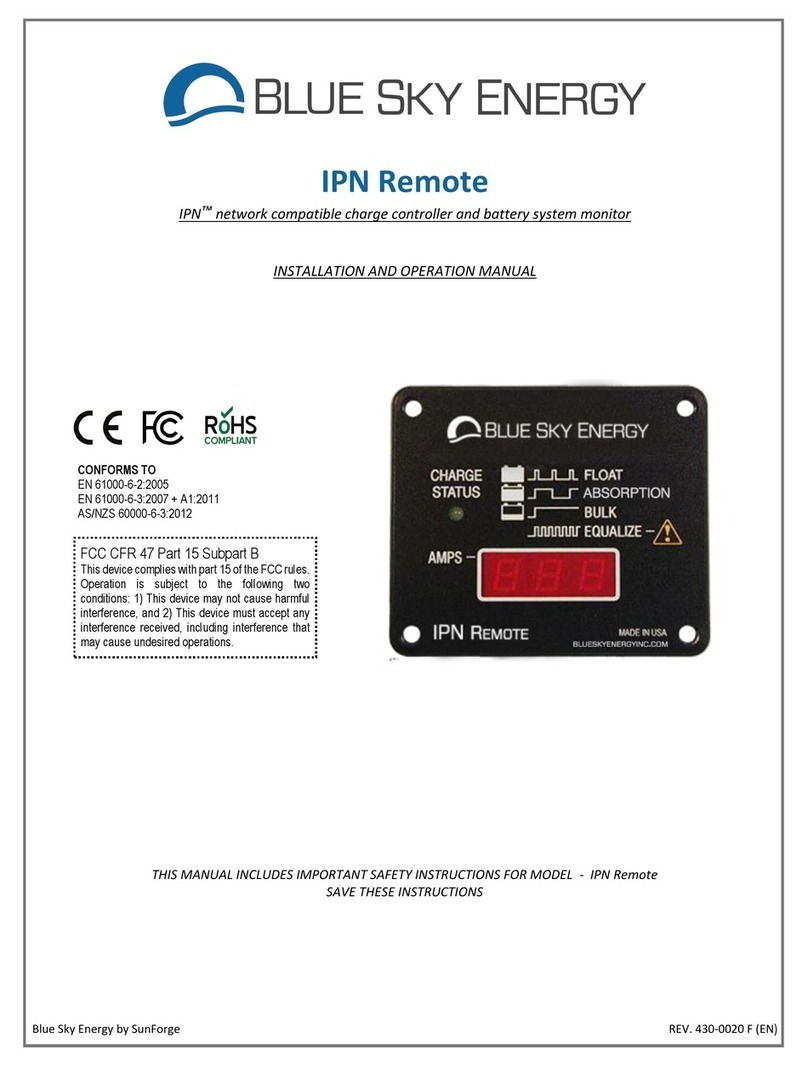
Blue Sky Energy
Blue Sky Energy IPN Remote User manual

Blue Sky Energy
Blue Sky Energy SOLAR BOOST 3024iL User manual

Blue Sky Energy
Blue Sky Energy SOLAR BOOST 3024i Installation and operating instructions

Blue Sky Energy
Blue Sky Energy SOLAR BOOST 3048 User manual
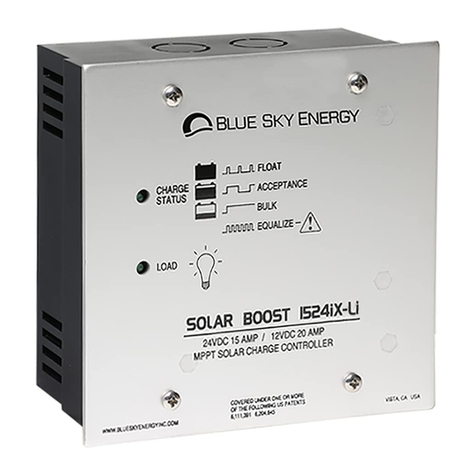
Blue Sky Energy
Blue Sky Energy SOLAR BOOST 1524iX User manual
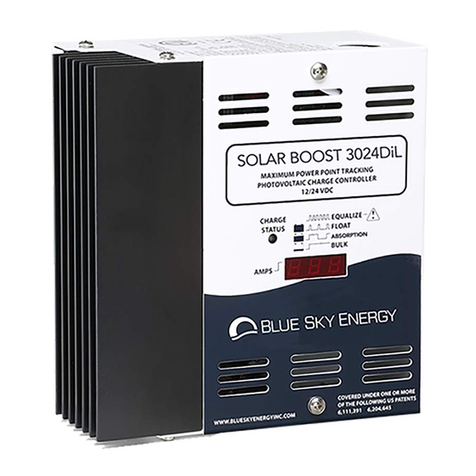
Blue Sky Energy
Blue Sky Energy SOLAR BOOST 3024DiL User manual
